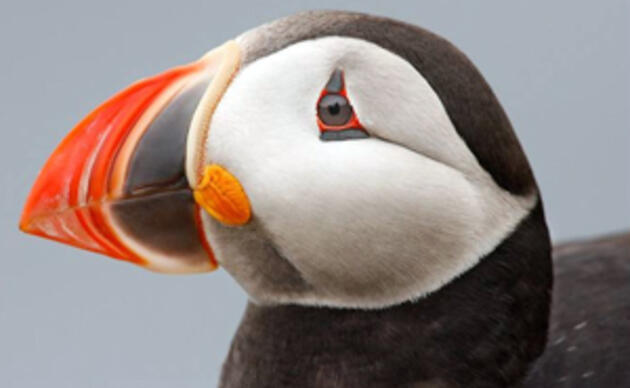Seabird Island News -Vol. 8 - 14 July 2023
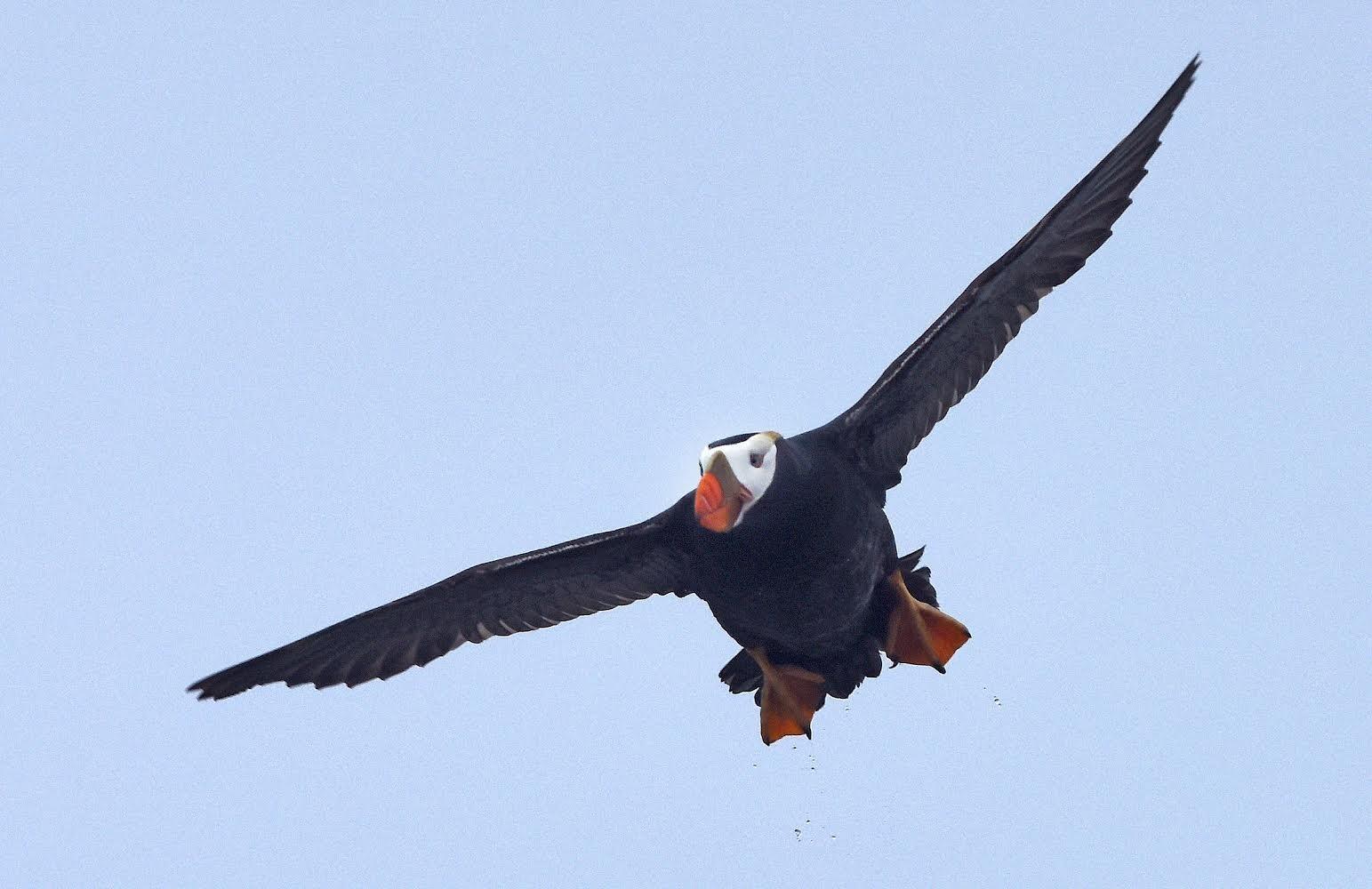
If you’re living on a seabird island, you should always expect the unexpected. This week, teams have been grateful for some good weather days, allowing them to get in a full day’s work. In some cases, that full day may not have been what the team anticipated. The Outer Green Island team had a pre-dinner surprise when a lost camp counselor and two campers landed their kayaks on the island’s shore. The crew was very respectful of the birds while waiting for their rescue team. Out on Egg Rock and Stratton Island, researchers did maintenance on their compostable toilets. We never said this job was glamorous, but the view makes it all worth it!
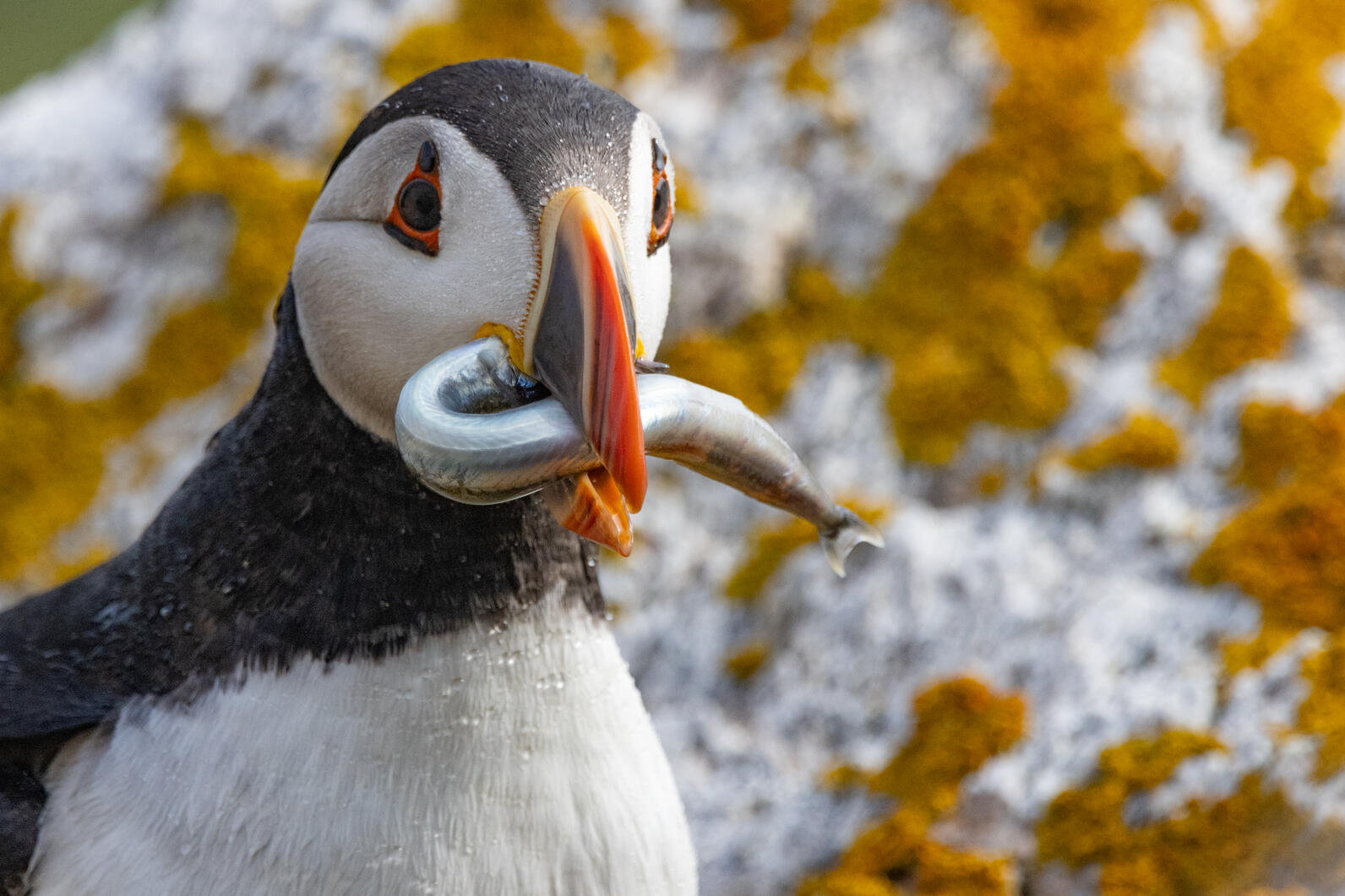
Alcid Update
The team on Matinicus Rock spotted a notable puffin this week. HU20, seen above, was spotted during a resighting stint. This puffin was transplanted from Newfoundland to Seal Island in 1989 and, at 34 years old, is the oldest living puffin documented by the program. Thanks to samples taken last year, we also know that this bird is a female, and she appears to be raising a chick this season!
While rowing back to Stratton Island after relocating a couple garter snakes to nearby Bluff Island, members of the team saw Black Guillemots with rock eels dangling from their bills returning to the Bluff Island landing spot. Excited by the sighting, the team hurried back to Bluff to do some guillie grubbing. Alas the burrow was too deep to grub, but it was still a fun sight for this tern-focused team!
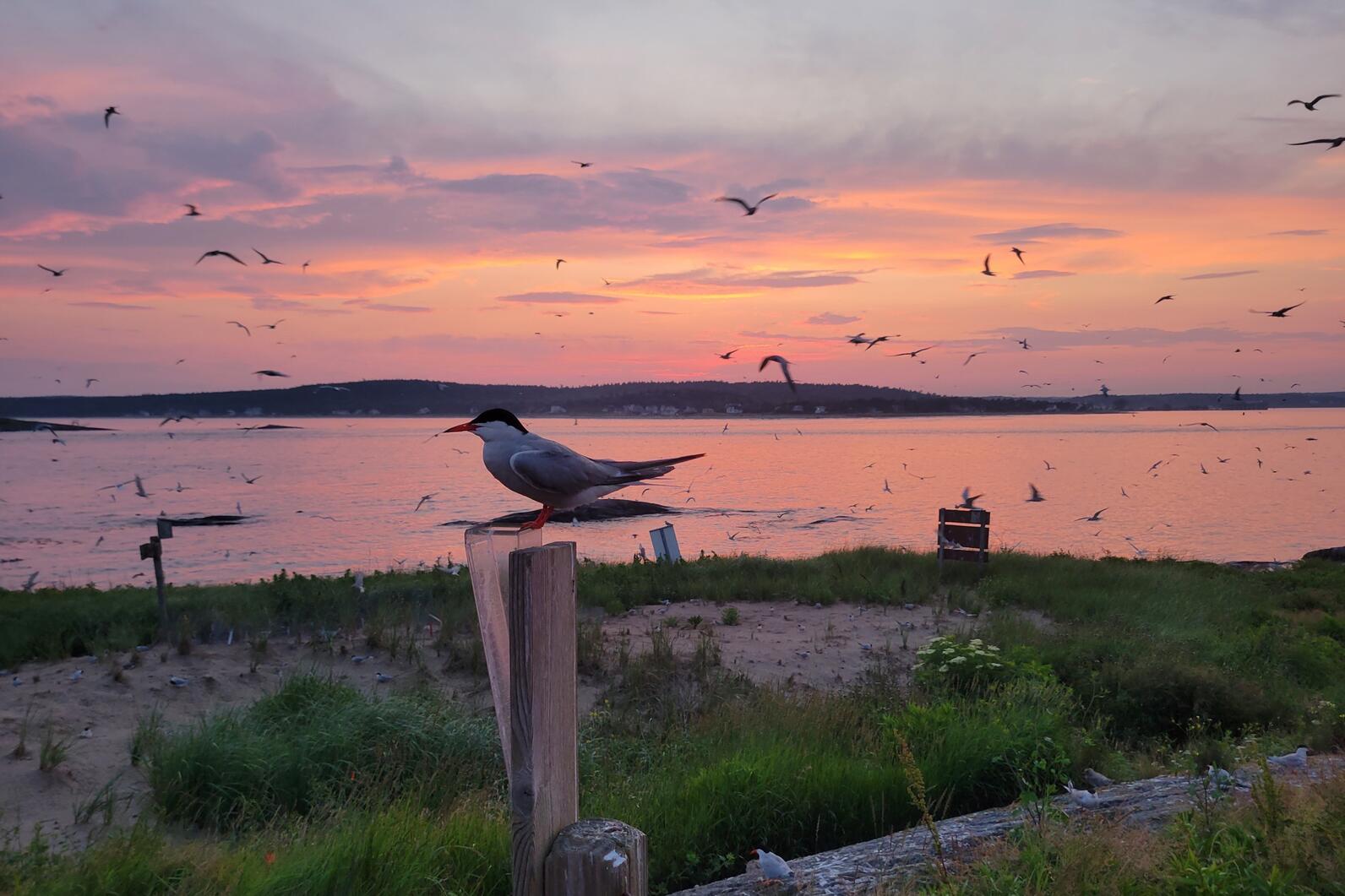
Tern Update
Chunky tern chicks are stretching and flapping those wings. There are even reports that some are beginning to fledge out of their study plots on Jenny and Pond Islands. One Jenny Island study chick even flew away before it could be weighed!
Diet studies across the islands indicate that feeding rates are low, leading to an increase in kleptoparasitic (fish-stealing!) behavior from worried tern parents. To add insult to injury, Seal Island reported a couple dead Arctic Terns in one day. The birds were swabbed for avian flu and fingers (or feathers!) are crossed while awaiting the results.
Explore.org
Bets are on for Duryea’s anticipated fledge date – potentially the earliest we’ve seen on camera. Cam viewers are estimating that Duryea may leave the burrow as early as next week—which, considering Dur’s early hatch date, could be accurate.
Duryea is the earliest hatch we’ve seen in the burrow by over a week. 2020’s hatchling, Stella, hatched on June 18 and fledged on July 28. Dur is on a similar timeline, making frequent forays out of the burrow to stretch his wings and check out the view outside of the burrow. He’s also losing his down feathers, a sure sign that he’s becoming equipped for his long journey at sea.
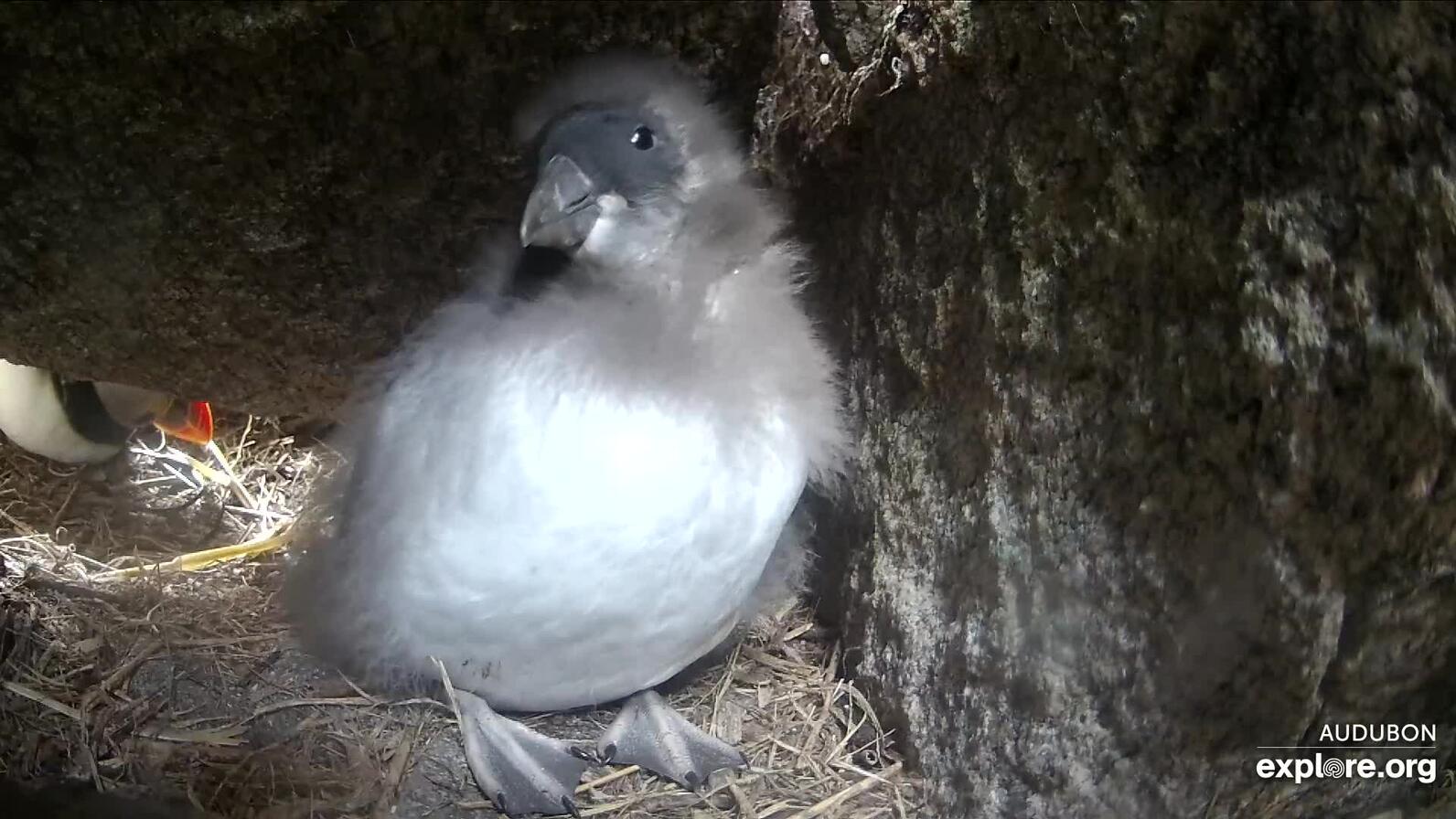
The Guillemot Burrow, unfortunately, will not see fledglings this year. Between the challenge of three eggs and the pair of intruding puffins, our on-cam guillemot pair was not able to have a successful clutch of eggs. The upshot of all this burrow drama is that next year will prove to be a very interesting year for this camera. We’ll be watching to see whether those pesky puffins (just kidding- how can you not love a puffin pair?!) or the steadfast and stubborn guillemots lay claim to that burrow. Next season, season 11 of the guillemot camera, is not to be missed!
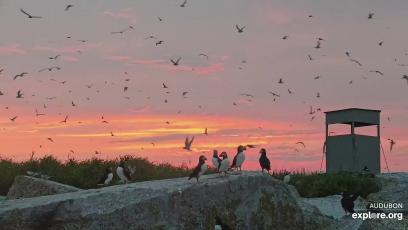
Island Highlights
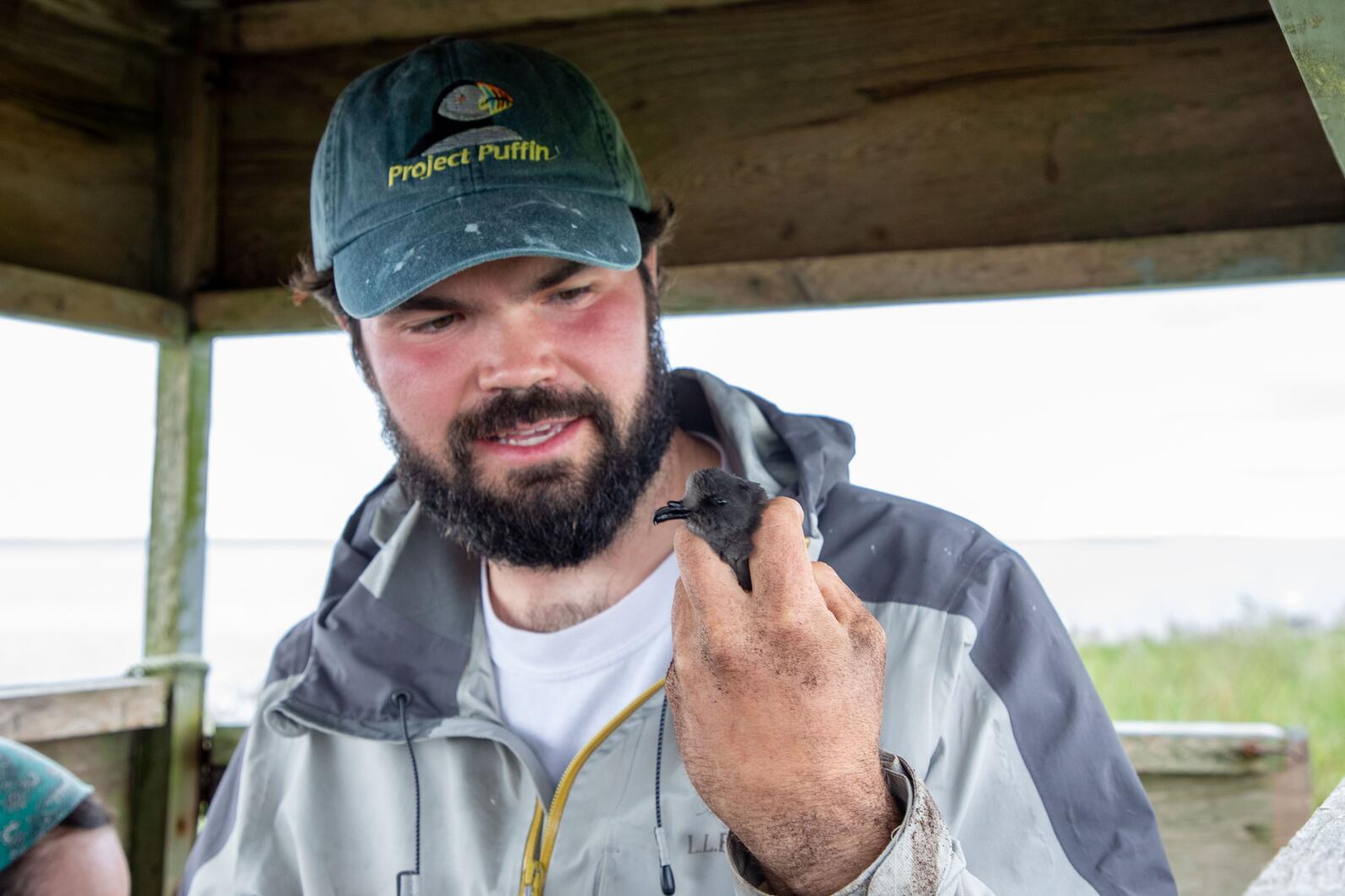
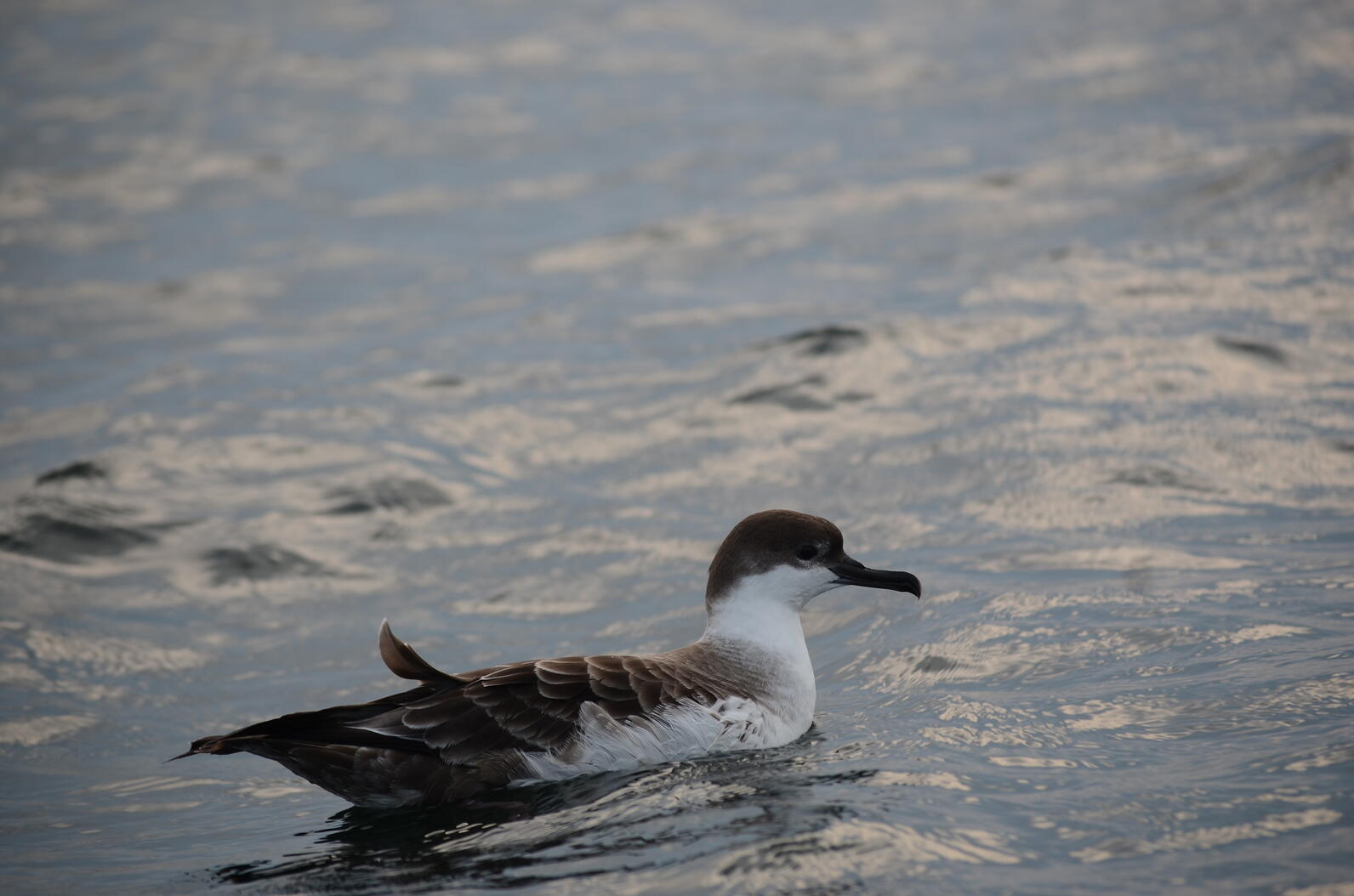
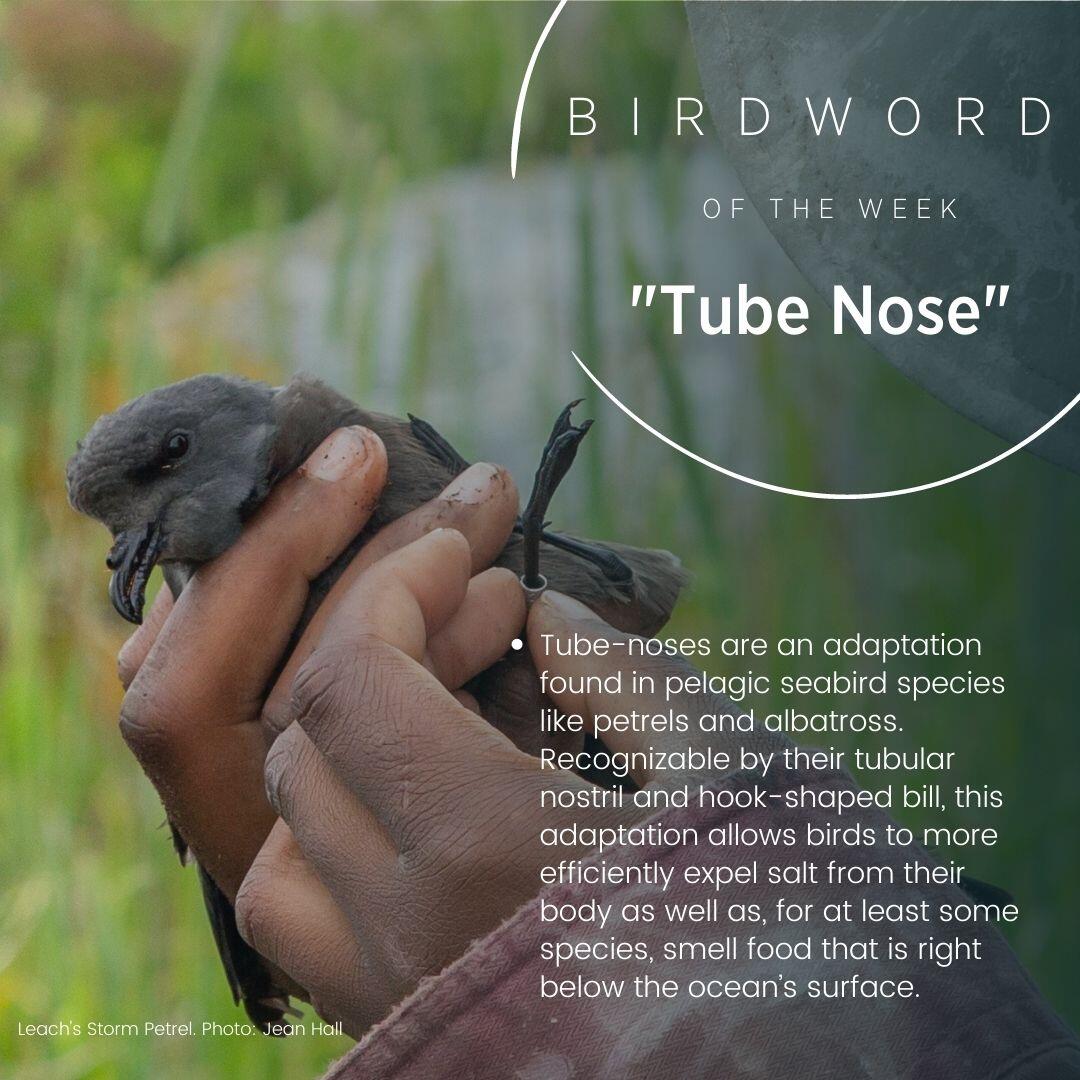
For additional news, please visit the Seabird Island News index page.
Learn about birds and take action
Adopt-A-Puffin
Adopt now and receive a Certificate of Adoption, along with a biography of "your" puffin!
Visitor Center
The Project Puffin Visitor Center (PPVC) is located at 311 Main Street in downtown Rockland, Maine. The center opened its doors officially on July 1, 2006.


